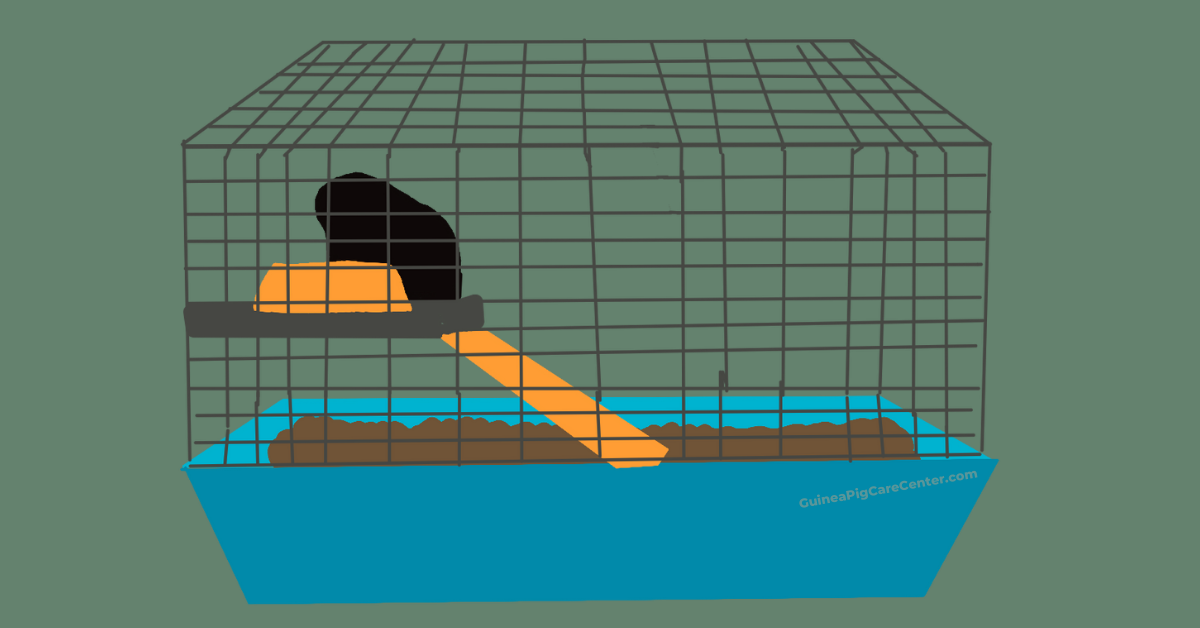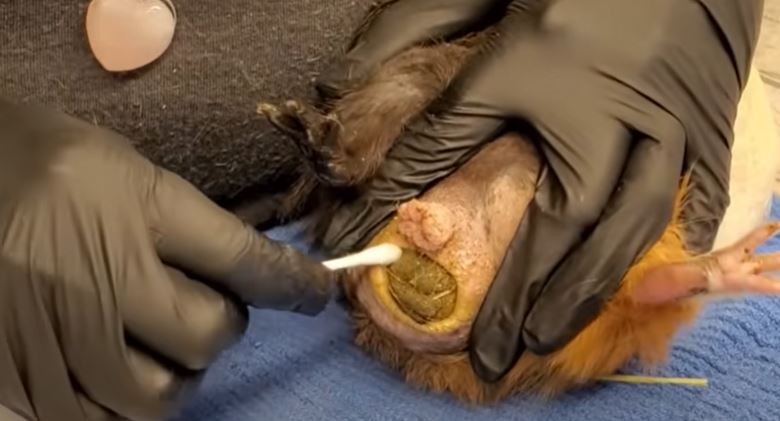Disclaimer: This article may be too graphic for young children. Please proceed with caution.
Guinea pigs need larger cages than what chain pet stores sell. This is because their ancestors lived in large open plains and darted around to find food and shelter. They don’t burrow or sit in one place. Having too small of a cage not only leads to unhappiness, the sedentary lifestyle also causes circulation problems in their legs which in turn means expensive vet bills and being “a bad pet”.
Ulcerated feet
A pet store cage does not provide adequate space for guinea pigs to run and use their legs. This means that their blood pools in their legs, causing health issues like bumblefoot. Bumblefoot (ulcerative pododermatitis) is a bacterial infection and inflammatory reaction on the feet of guinea pigs. Ulcers appear on the bottom of their swollen feet, making it painful to walk or move. Even if a guinea pig does not display these gruesome symptoms, it is still painful for an animal, whose instinct is to be active, to be lame.
Anal impaction
Male guinea pigs, if not given adequate space to run will lose muscle tone in the anal area. This means that their poop is unable to pass and exit their body. While this happens with older guinea pigs as well, having a small cage speeds up the process. It is very uncomfortable and painful for guinea pigs to have a blob of poop stuck inside them.
Dead inside
How boring it must be to live inside of a tiny, metal jail when your ancestors used to roam the plains.
“It would be like ‘being sent to your room’ forever, only your room is the size of a walk-in closet and that becomes your life. You have to entertain yourself, eat, sleep, and ‘go to the bathroom’ all in that small space — until you die. Even if you are hauled out and allowed to ‘play’ with some other species periodically, it’s a mind-numbing, dreary existence.” – GuineaPigCagesStore.com
Even more health issues
Being inactive and a strong case of depression makes guinea pigs in small cages prone to even more health issues. Upper respiratory infections, anorexia, fungus, and more… A pet owner could take their pet to the vet for medications to treat the symptoms, but not the cause, which will end up costing a lot of money. Irresponsible pet owners will ignore their pet’s health issues, leaving it to die in pain.
Fighting
Guinea pigs that were bought a friend, while the original intent was good, keeping multiple guinea pigs in a pet store cage will provoke fights from females, and especially males. Unlike other animals, guinea pigs do not enjoy cuddling together. One must display dominance over the other. In a too-small cage, there are not enough options for each to have their own space, so they fight for territory and survival.
It’s not too late to make a change
Nobody has ever regretted moving their guinea pig(s) to a larger cage, but they have certainly regretted moving smaller or keeping small. Most guinea pigs will “popcorn” with excitement once they start to explore their new large home!
Bigger doesn’t mean more expensive
Guinea pig habitats that are the proper size are cheaper than pet store cages. These are the best habitats to get, and most are cheaper than pet store guinea pig “starter kits.”
Brand name: Midwest Habitat (7.83 square feet – minimum for 1*-2 guinea pigs)
Generic: Amazon Basics Small Animal Habitat (7.65 square feet – minimum for 1*-2 guinea pigs)
Brand name: 2×3 GuineaPigCagesStore C&C cage (8.15 square feet – minimum for 1*-2 guinea pigs)
2×4 GuineaPigCagesStore C&C cage (10.87 square feet – preferred for 1*-2 guinea pigs)
Generic: 2×3 DIY C&C cage (8.15 square feet – minimum for 1*-2 guinea pigs)
2×4 DIY C&C cage (10.87 square feet – preferred for 1*-2 guinea pigs)
*It is not recommended to keep single guinea pigs. Find out why.
Learn more about guinea pigs:



2 thoughts on “The detrimental consequences of too small a cage”